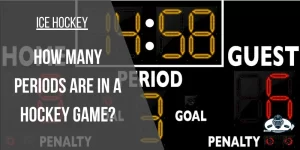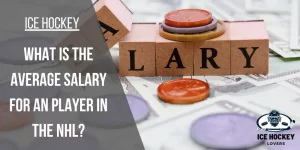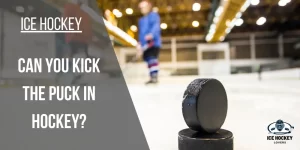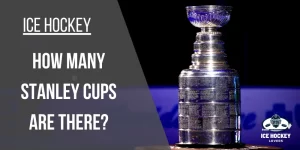What Is Interference In Hockey? Hockey Interference Explained!
Are you looking to understand the significance of interference penalties in hockey? This article will delve into hockey penalties, focusing specifically on the interference penalty.
Table of Contents
What Is Interference In Hockey?
Hockey Interference occurs when a player hinders the progress of an opponent who does not have the puck. This penalty can be called in various situations, including:
- Body contact: When a player physically touches an opponent who doesn’t possess the puck.
- Stick contact: When a player uses their stick to contact an opponent who doesn’t have the puck.
- Screening: When a player stands before the goaltender and blocks their view of the puck.
- Interfering with a pass: When a player makes contact with an opponent attempting to pass the puck.
- Interfering with a shot: When a player makes contact with an opponent trying to take a shot on goal.
Interference Penalties
Interference penalties can be minor, major, or even match penalties. The severity of the penalty will depend on the severity of the infraction.
- Minor Penalties: Minor penalties result in a two-minute penalty for the offending player. During this time, the offending player must sit in the penalty box. This creates an offensive advantage for the opposing team called a power play. The power play team will have a one-man advantage over the offending team for two minutes. During this time, they will have a better chance of scoring a goal.
- Major Penalties: Major penalties result in a five-minute penalty for the offending player. The offending player must serve the full five minutes in the penalty box. This is a significant disadvantage for the offending team, as they will be shorthanded for five minutes.
- Match Penalties: Match penalties are the most severe type of interference penalty. They result in the offending player being ejected from the game. The offending player’s team will be shorthanded for five minutes, as they will have to play without the ejected player.
Avoiding Hockey Interference Penalties
Players should adhere to specific guidelines and rules to avoid interference penalties in hockey. Here are some tips to help you avoid interference penalties:
- Play the puck: If an opponent has possession of the puck, you are generally allowed to check or make contact with them to gain control. However, if you interfere with an opponent who does not have the puck, it will likely result in a penalty.
- Maintain the appropriate distance: Give opposing players enough space to make a play. You may be called for interference if you get too close and impede their progress. Be mindful of the distance and avoid initiating unnecessary contact.
- Timing is critical: It’s crucial to time your actions properly to avoid interference penalties. For example, if an opponent is about to receive a pass, wait until they have possession before engaging physically. Interfering with them too early can lead to a penalty.
- Avoid unnecessary contact: Refraining from contacting opponents when playing the puck is unnecessary. Unwanted interference, such as hitting or impeding players away from the play, will likely result in a penalty.
- Be aware of your surroundings: Maintain situational awareness during the game. Stay vigilant and anticipate the movements of both opponents and teammates. By being aware of your surroundings, you can position yourself better and reduce the risk of interference penalties.
- Respect the officials: Refs and linesmen have the final say on penalties. Accept their decisions and avoid arguing or engaging in confrontations with them. Showing respect to the officials can help maintain a positive atmosphere and reduce the likelihood of additional penalties.
Conclusion
In conclusion, the interference penalty in hockey plays a crucial role in maintaining fairness, safety, and the overall integrity of the game. It is a deterrent against impeding or obstructing an opponent’s progress without making a legitimate play for the puck.
Interference penalties are designed to uphold the principles of fair competition, ensuring that players can showcase their skills and make strategic moves without undue interference from their opponents. By penalizing acts of obstruction or interference, the game became more dynamic and exciting, allowing for more fluid gameplay and increased scoring opportunities.

Who is Austin Taylor?
Meet Austin Taylor, your go-to source for everything ice hockey! With a passion for the sport that’s as deep as the ice itself, Austin Taylor brings you concise, expert insights and nitty-gritty details on all things hockey. From gear reviews to strategy breakdowns, Austin Taylor is your trusted guide to navigating the exhilarating world of ice hockey. Get ready to lace up your skates and dive into the game with Austin Taylor as your ultimate companion.




